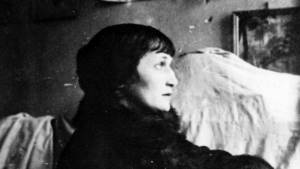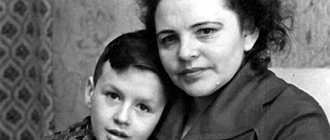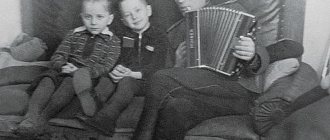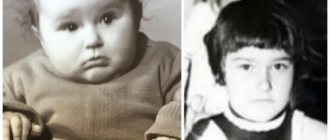The famous ring of Akhmatova
By the way, on the program “Let Them Talk,” among the stunning exhibits that Mazur allegedly saw with her own eyes in Batalov’s house, she named both the legendary and Akhmatova’s ring.
We decided to find out what this legendary ring is.
It must be said that Akhmatova loved jewelry, wore it correctly and skillfully praised it. I remember the “necklace of black agates” from “Poem without a Hero.” Experts are still not sure whether the necklace was black, because in paintings Anna Andreevna was depicted wearing a white necklace. And even if it was black, then did the poet confuse agates with jet? But no matter. The second significant thing is again the black ring from the textbook poem “I received rare gifts from my Tatar grandmother.” This poem mentions that the grandmother, having forgiven the lyrical heroine for “her absurd temperament,” bequeathed to her a “black ring.” “So she said: “He suits her, she will have more fun with him.” There are a lot of legends around this black ring, according to one of which Akhmatova allegedly gave it to her friend Boris Anrep before he left for emigration, admonishing him with the words: as long as you keep it with you, nothing will happen to you. As usual in such cases, he lost a familiar ring and some kind of misfortune seemed to happen to him. Or it didn’t happen, otherwise how would we have known about this story.
The widow of Alexei Batalov wears the same black ring given to Akhmatova by Gumilyov.
The third valuable artifact is a brooch from Vladimir Garshin, whom Akhmatova was going to marry, but never did. As the legend goes, on the eve of the wedding, Garshin dreamed of his grandmother, who begged him not to marry a witch. Anna Andreevna herself added that on the day of Garshin’s death, the brooch cracked, and thus she realized that her lover was no longer on earth.
But this brooch is kept in the Fountain House and no Aunt Natasha or Uncle Misha has taken it from there yet.
So, apparently, the Mazur woman was hinting at another decoration.
As you know, soon after the wedding Nikolai Gumilyov left his young wife and went to Africa. (This was a rather strange act; Anna Andreevna was even called the straw widow), but upon his return, her husband brought her two rings. One is black, and the other, with carnelian gem:
And how the light from heaven illuminated him,
I gave him my hands
And he gave me a mysterious ring,
To protect me from love, wrote Anna Akhmatova
Akhmatova did not particularly mystify the ring with the carnelian gem, but she immediately attributed magical powers to the second ring. Probably because he was black.
There were rumors that the decoration protected the wearer from death and misfortune. Moreover, unlike many treasures that she easily gave away, Akhmatova did not give away the black ring to anyone and wore it all her life. In youth - on the index finger of the left hand, then - on the ring finger. Posing for photographers and artists, she tried to position her left hand so that the ring was visible.
One of her last poems was dedicated to the black ring:
And black music mad face
It will appear for a moment and disappear into the darkness,
But I made out the mysterious signs
And I’m wearing my black ring again.
It was with this ring that Alexey Batalov captured Akhmatova. The fact is that the actor drew very well and in his youth even wanted to become an artist, but he was shy about his artistic works and kept them anyhow, without particularly caring.
Until recently, it was generally accepted that Akhmatova was buried with this ring, but according to Mazur, the widow of Alexei Batalov now wears the treasured jewelry.
And indeed, the similarities are obvious. There are numerous shots of Gitana with a large ring on her finger. Not only is the ring visually similar to Akhmatov’s, but the description also matches.
At one time, Mikhail Bazhenov, a collector and collector of Akhmatova’s documents and relics, recorded the story of one of Akhmatova’s visitors about the ring.
“In July 1962, I was in Komarovo in Anna Andreevna’s Booth,” said the visitor. “During the conversation, I saw the ring that I had heard so much about, and asked me to hold it. Anna Andreevna took it off her hand, and I examined it carefully. The stone was black agate, its shape was an oval with a poorly polished surface, on which scratches were visible. Outwardly it seemed matte. The setting of the stone (caste) and the ring itself are voluminous silver. The ring could be easily removed from the finger, although the fingers were already swollen.”
Whether this is the same ring or not is a mystery. But there are certain similarities. And, one must assume that the treasure will cost a lot. As you know, everything that is sung and poeticized has a special value.
Poet Anna Akhmatova, 1922. Photo by Moses Nappelbaum. ITAR-TASS
Anna Akhmatova's four main men
Anna Andreevna's maiden name is Gorenko. Having married for the first time, she became Gorenko-Gumileva, and after getting divorced, she took a creative pseudonym - Akhmatova, which also became her official surname. By her second husband, the poetess was Akhmatova-Shileiko, and after the separation she again became Akhmatova.
How much did Russia spend on gifts on Valentine's Day?
An Australian couple took a huge python for a ride in their car.
Eggs and poultry meat may become more expensive on Russian store shelves
Anna Andreevna also had a third marriage, actually - with Nikolai Punin, which also ended in separation. Akhmatova had many affairs in her life, one of which happened during her first marriage - with Amedeo Modigliani, who had a great influence on her work. We will talk about four love stories of the poetess with the men mentioned.
Nikolai Gumilyov - the only husband of Anna Akhmatova and the marriage that became fatal
They met when Anya was 14 years old and Nikolai was 17. They studied at a gymnasium in Tsarskoe Selo and saw each other quite often. Anna Gorenko (the real name of the poetess) did not take the young man seriously, seeing him only as a friend. Gumilev thought differently. He imagined her as his romantic heroine, called her a mermaid, showered her with poetry, and offered to become his wife. She refused.
Nikolai went to study in Europe. Anya experienced her half-childish hobbies, but ultimately sent him a letter, after which he decided that love was possible. Having abandoned everything, he rushes to Crimea, where the Gorenko family spends the summer. Gumilyov again makes an offer, but again receives a refusal: the mystical Anna sees dolphins washed up on the seashore and interprets this as a bad sign. After these events, Nikolai makes two suicide attempts and proposes again. And again in vain.
Exhausted from unrequited love, the poet goes on a trip to Africa, where his most famous poem “Giraffe” is born. Upon their return, they occasionally see each other with mutual friends; the fourth proposal was accepted. Whether this was love on Anna’s part is unknown. Before the wedding, she told everyone that Gumilyov was her destiny. It is significant that the bride’s relatives ignored the wedding ceremony, considering this marriage unpromising. And in some ways they were right.
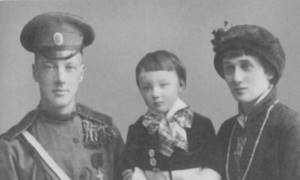
Nikolai Gumilev, Lev Gumilev and Anna Akhmatova
Anna was most worried about her creativity, and Nikolai, having achieved what he wanted, sharply lost interest in both his wife and family life in general. He begins to travel a lot and become interested in other women. It was decided to give the born son Leo (who would, without exaggeration, be a great scientist) be raised by his mother-in-law.
With the outbreak of the First World War, Nikolai went to the front, then traveled a lot. Each spouse lives their own life; in 1918 they divorce. They will have other marriages, but something connecting them, besides a son, will remain between them forever. In 1921, Gumilyov will be shot, Anna will write “one soul is tightly welded together.” She will not destroy his manuscripts, she will even try to publish the poems of the “enemy of the people” and until the end of her days she will call herself his widow.
Romance with Amedeo Modigliani
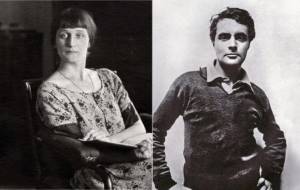
Soon after the wedding, in 1910, Akhmatova and Gumilev went to Paris, where Anna Andreevna met Amedeo Modigliani, an Italian artist and sculptor, a representative of expressionism, most famous at the beginning of the 20th century. Their romance did not arise immediately. In the first year they met, they rarely met.
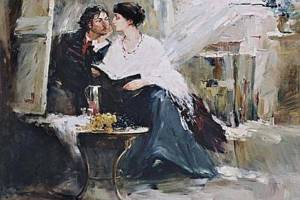
When Anna Andreevna returned to Russia, she received a message from Modigliani with a declaration of love. In 1911, the poetess again went to the French capital, where she spent three happy months with the artist.
Those who have been in contact with others while sick with COVID may be prosecuted
“Someone also likes me”: Sobchak responded to people who criticize her appearance
Slender brunette with long hair Laysan Utyasheva radically changed her image
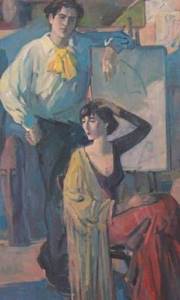
The portrait he painted was very dear to her. It was always framed on the wall wherever she moved.
Biography of Anna Akhmatova
During her life, Anna experienced many dramatic moments. Despite the fact that back in the twenties Akhmatova was recognized as a classic of Russian literature, later her work was subject to severe censorship and even persecution. And the resolution of the Central Committee of the All-Union Communist Party of Bolsheviks, adopted in 1946, was canceled only after the death of the poetess. Many of Akhmatova's works were not published in Russia, both during her life and after her death.
Anna's close people were also subjected to repression. Her first husband, Nikolai Gumilev, was shot in 1921. At that time, the couple had already divorced. Akhmatova's third husband, Nikolai Punin, was arrested three times and died in a camp in 1953. This fate did not spare the poetess’s only son, Lev Gumilyov. He spent more than 10 years in prison. Anna described her grief and the grief of mothers and wives like herself in the poem “Requiem.”
Despite the persecution, Anna was revered during her lifetime not only in the USSR, but also abroad. Her life was full of both dramas and happy moments, which are described in Akhmatova’s full biography.
